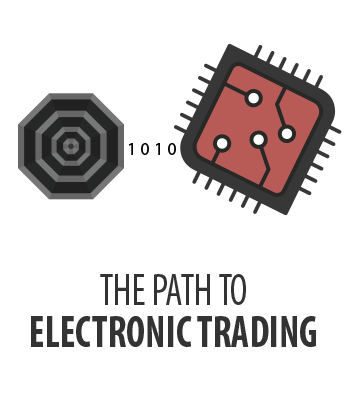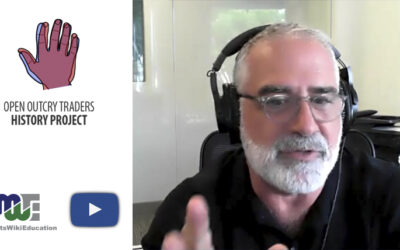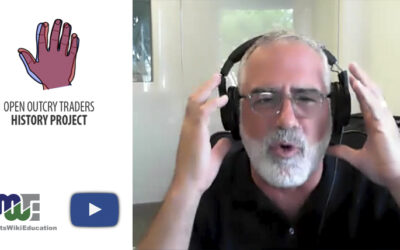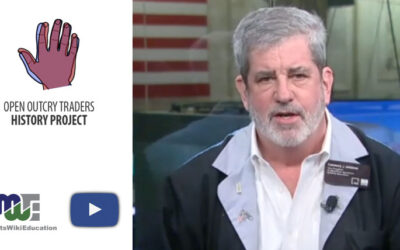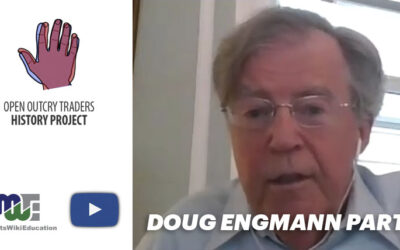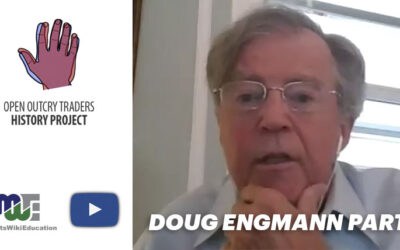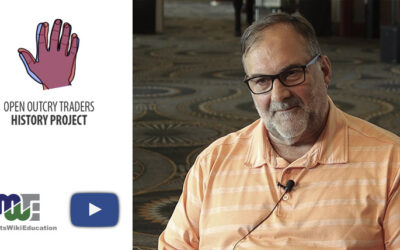Veteran Currency Trader Yra Harris Found His Way Onto the Floor, Later Embraced Electronic Trading
Yra Harris was on a career track to become a college professor in the 1970s, earning a master’s degree in economics. But when he came home from school his parents gave him $250 for a suit and told him to go look for a job.
He did, interviewing at Continental Bank, First Chicago and other banks, but he said he had “broader expectations,” as well as aspirations to go to Washington to work for a congressional committee.
A family friend suggested he get an IMM (International Monetary Market) seat at the CME for $10,000, but it wasn’t until May 1977 that he got a membership. A number of friends followed him to the trading floor, he said, including a former roommate who stayed on the floor for more than eight years.
The physical demands of the currency pit were hard on traders’ bodies, Harris noted. Traders developed polyps on their larynxes from yelling and suffered other related health conditions. Now 69, Harris said he managed to escape those physical obstacles and can still run a 7-minute mile and lift weights. “To be down there you had to be in shape,” he said.
Harris said his family life didn’t suffer from his trading career. “I got up at 5 a.m., took the dogs out… and was home at three in the afternoon,” he said. “When the kids were in school I could be there to get them off the bus. I could drive the carpool. It was actually a really good thing.”
He said he promised his wife he would never run for the CME board, but finally in 1997, “when the baby was 10,” he did.
“But it was kind of funny — I’d be sitting at the dinner table rolling positions to Hong Kong. My wife would hate it because they would call at three in the morning…[about cash currency positions]. My kids would answer the phone, and they would say, “Hey, execution!”
“All my kids understand the business,” Harris said, including his daughter, a financial journalist at Bloomberg.
Harris said he was offered a lot of jobs in New York because of his experience with investment houses. “But I didn’t think I would have the freedom I had on the floor.” He said he thought he would go that route at some point, but he never did — a minor regret. “There is more stability to it … and a better payout at the end.”
Another regret was closing two hedge funds. “My partner and I raised $7 million, and a million of it was Paul Tudor Jones, of his own fund. He wanted to give us another $10 million, but it was getting too big, and we closed the fund. That was mistake No. 1,” Harris said. Scaling the hedge fund business was an ongoing issue and Harris said he also closed a fund in 1991-1993 after receiving a large investment from Commodity Corp. “Two gigantic mistakes,” especially with Paul Tudor Jones, who had a “phenomenal” amount of integrity, he said.
Although Harris began as a veteran floor trader, he embraced electronic trading, offering his input as the Chicago Mercantile Exchange designed its electronic systems. “You can’t have tech people design these things, because it will be like a Christmas tree with so many things,“ former CME Chairman Scott Gordon told him. “You are still the trader. What is it that traders will want? How do we simplify this so we don’t scare everybody and make it user friendly?”
“I was aware of what was coming,” Harris said. “I was for it, because I had been to New York, and if you traded for a fund you had to use computers anyway.” He added that many of the traders gravitated to either Reuters or EBS to do business on the screen. “My [current] trading screen in front of me has 164 variables … my eyes are just so accustomed to the screen — I trade everything around the globe,“ he said.
But Harris added, “What you could get on the floor was energy … just a phenomenal amount of energy.” Floor traders also had an edge. “Now I have no edge,” he said. “The only edge I have is being patient and waiting for the algorithm to drive the market one way or another. And I can find a level where there is something that I want to do.
“Basically, I think of myself as a human algorithm,” Harris said.

